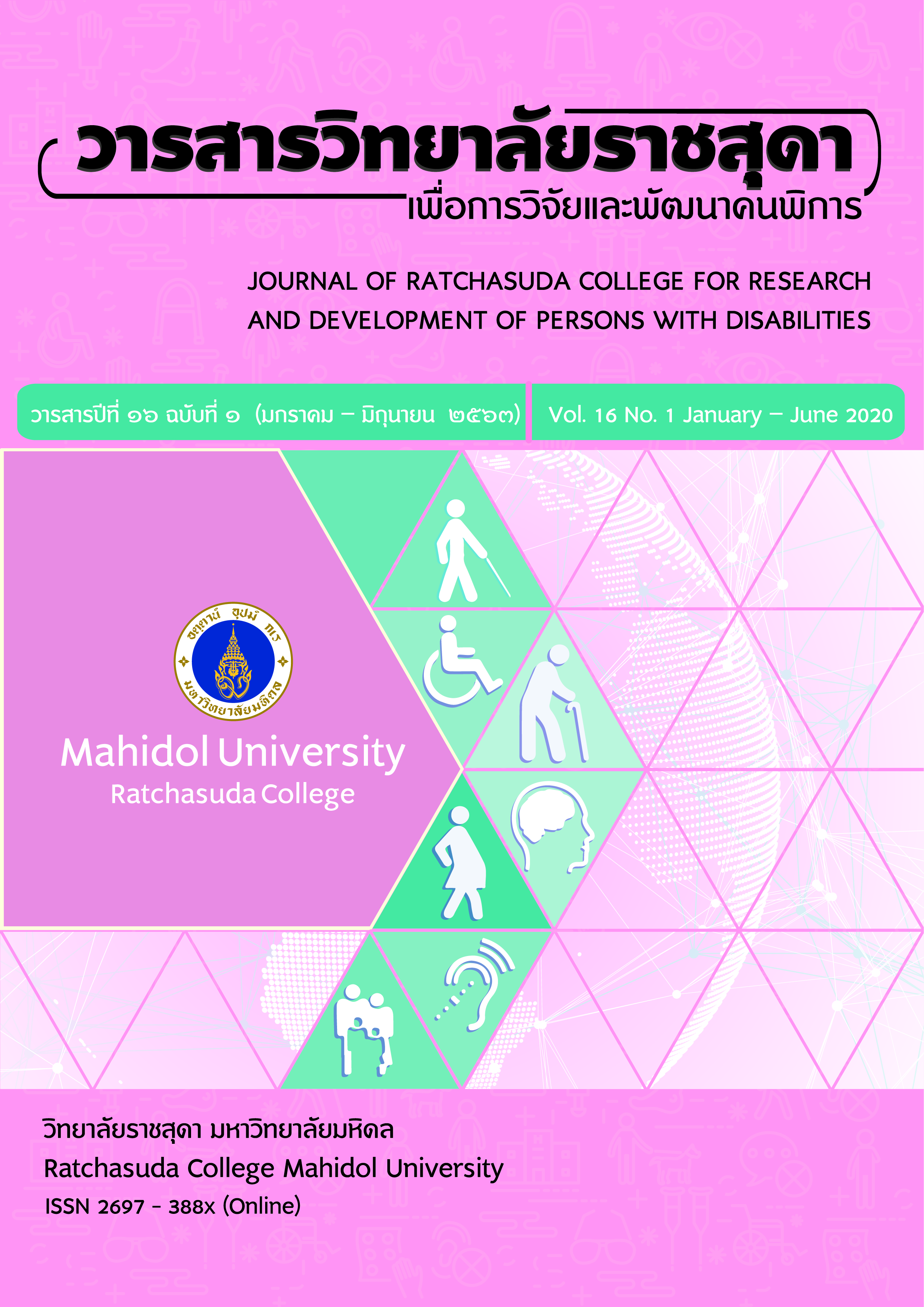Communicative Ability Development by Picture Exchange Communication System for a Student with Autism Spectrum Disorder and Oral Cavity Impairment Caused by an Accident
Keywords:
Communicative Ability, Picture Exchange Communication System, Student with Autism Spectrum Disorder and Oral Cavity Impairment Caused by an AccidentAbstract
The purpose of this research was to develop communicative ability by using Picture Exchange Communication System for a student with autism spectrum disorder and oral cavity impairment caused by an accident. The research participant was a 5 year-old male student with autism spectrum disorder and oral cavity impairment since an attack of a Rottweiler dog caused him facial and oral lacerations. Tools used in the research were 1) learning management plans based on Picture Exchange Communication System 2) Picture cards 3) Communicative ability development assessments. There were three phases in the research program which were 1) How to communicate 2) Distance and Persistence 3) Picture discrimination. The research results were presented in graphs, communicative ability progression percentage analysis and comparison, and content analysis. The output of this research showed the student participant with 0 percentage of communicative ability had developed his communicative ability after attended the research learning program using Picture Exchange Communication System. His communicative ability scores were 75% in the first phase – the picture exchanging phase, 70% in the second phase – the distance increasing phase and 80% in the final phase – the picture distinguishing phase. There were 15 teaching sessions for the learning program. The communicative ability of the autism participant after the learning program using Picture Exchange Communication System was higher because he understood the meanings of the pictures and he had followed the practice learning steps correctly.
Downloads
References
Bondy, A.S. & Frost, L.A. (1994). The Picture Exchange Communication System. Focus on
Autistic Behaviour, 9, 1–19.
Bondy, A.S. & Frost, L.A. (2003). A Pictures Worth PECS and Other Visual Communication Strategiesin Autism. Bethesda, MD: Woodbine House.
Georgia, A. M. & Areti, O. (2007). The Application of PECS in a Deaf Child With Autism : A Case Study. Focus on autism and other developmental. disabilities. 22(1),207
Lin, S. (2006). The use of the picture exchange communication system to improve communication skills in a child with multiple disabilities. National Taiwan Normal University, Department of Special Education. Taipei, Taiwan.
Maggie, H. (2010). How the Picture Exchange Communication System (PECS) Assists Children with Autism Acquire Language. Rochester, NY: St. John Fisher College.
Tien. K.C. (2008). “Effectiveness of the Picture Exchance Communication System as a Functional Communication Intervention for Individuals with Autism Spectrum Disorders: A Practice Based Research Synthesis.” Education and Training in Developmental Disabilities March 2008 (Online). blueman.wikispaces.com/file/…/Tien 2008 effectiveness of PECS.pdf,March 1, 2012.
Wansej, S. (2008). Production and use of learning support media through looking for autistic individuals in the home and community. Khon Kaen. Kangnanawittaya.
Downloads
Published
How to Cite
Issue
Section
License
บทความที่ได้รับการตีพิมพ์เป็นลิขสิทธิ์ของวารสารสถาบันราชสุดาเพื่อการวิจัยและพัฒนาคนพิการ






